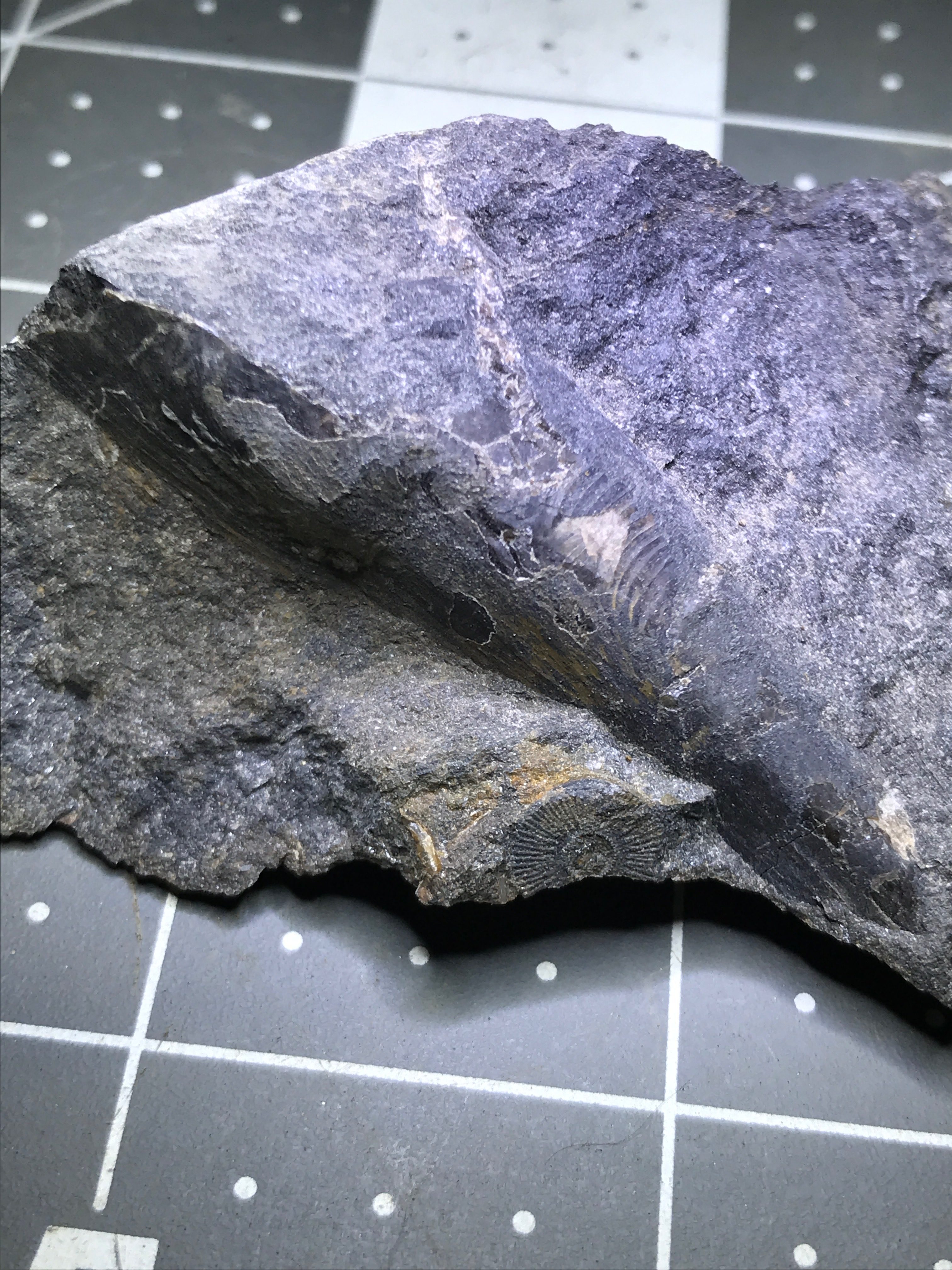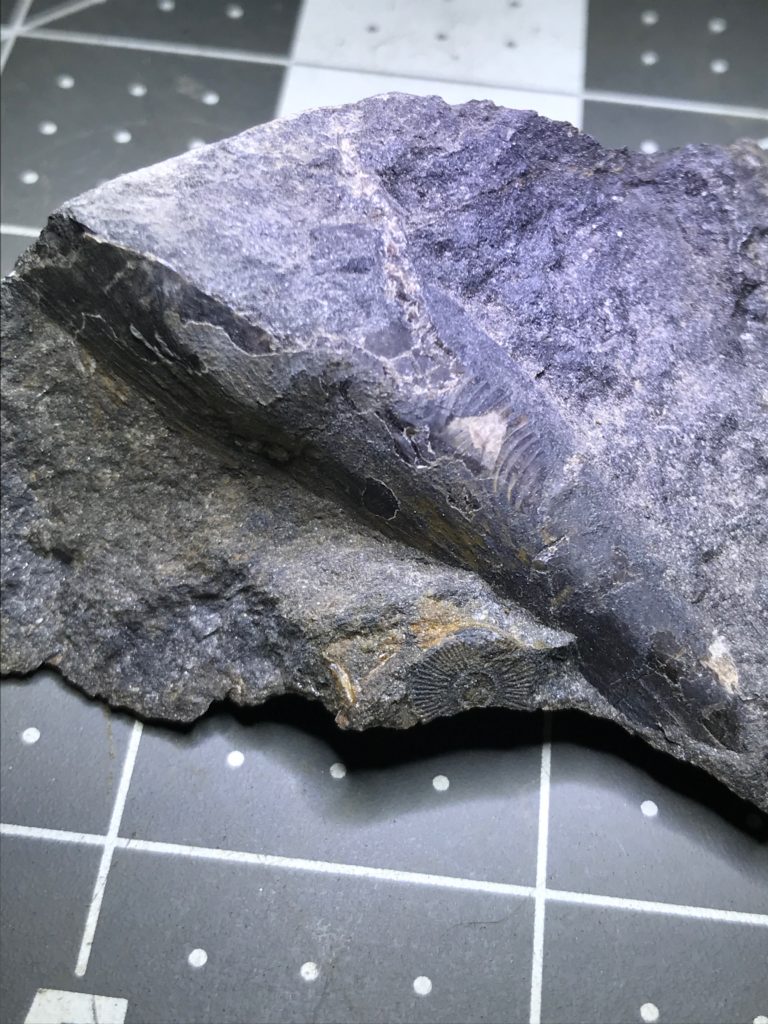Update:
This specimen is Allopinna godleskya Yancey 2024.
-Clint August 2024
After finding a great Sea Pen example, I also found this one that had been set aside. The specimen passes through the rock, showing itself on the other side. A Crinoid stem impression can be seen on the opposite side.
The first one I found was supposed to be Pteronites, as indicated in the Pennsylvanian Bivavle Publication from Ohio. However, as I understand it today, Pteronites is not a pinnid genus. It could be Aviculopinna. However, it seems that this will not be a genus that occurs in the Pennsylvanian. A long story short, this particular specimen will likely be assigned to a different genus in the future due to work happening elsewhere.
References
- Yancey, T.E., 1978, Brachiopods and mollusks of the Lower Permian Arcturus Group, Nevada and Utah, Pt. 1, Brachiopods, scaphopods, rostroconchs and bivalves. American Paleontology Bulletins, 74(303), pp. 257–363
- Yancey, T.E., Amler, M., Raczyński, P., & Brandt, S., 2023, Rebuilding the foundation of late Paleozoic pinnid bivalve study (family Pinnidae). Journal of Paleontology, 97(1), pp. 140-151.
- Yancey, T.E., 2024, Revision of Late Paleozoic Pinnid Genera and North American Species of Bivalve Family Pinnidae, Paleontological Research Institution, p. 84
- 2021. Pinna nobilis, Wikipedia


